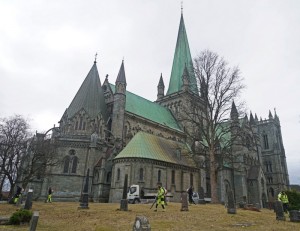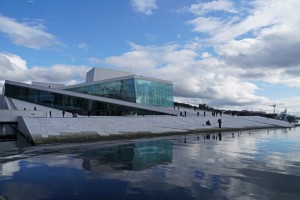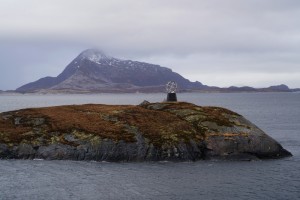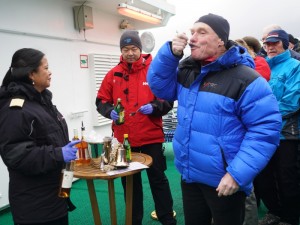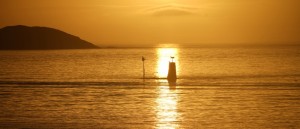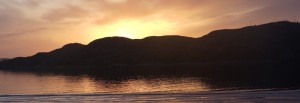Trondheim & Oslo
April 3 Sunday: At Sea
Today’s highlight was the crossing of the Arctic Circle at 66°33’N which is an important ‘rite of passage’. Around 9:30am, many passengers gathered faithfully on Level 7 for a taste of Norwegian Arctic traditions: we took a drink from a spoon which was filled with cod liver oil and alcohol. I find the taste strange. Well, I have spent another 16 nights in the Arctic!
Another highlight was the sailing past the Seven Sisters mountain range which are between 900 and 1100 metres high. Poor weather robbed us off the breathtaking view! The consolation prize was the sighting of ‘the hole in the rock‘ near Brønnøysund on a grey day.
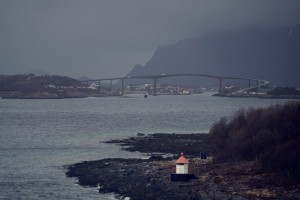 |
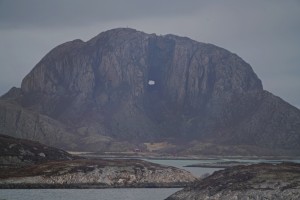 |
We had two landings. The expedition team took us on a walk in Nesna, an idyllic old trading post. It was raining and the place looked dull and grey on a lifeless Sunday.
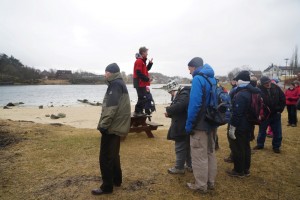 |
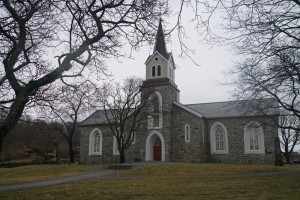 |
In the evening, the boat arrived in Rørvik which looks pretty with an old quarter with many colourful wooden houses. In between the two landings, I attended a talk on Petter Dass (ca. 1647-1707), the foremost Norwegian poet of his generation and watched a beautiful sunset.
|
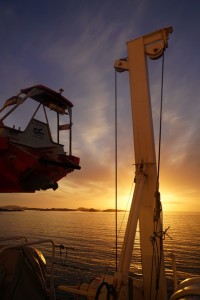 |
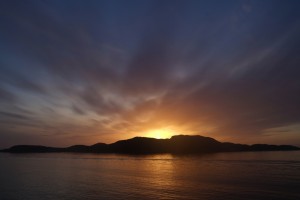 |
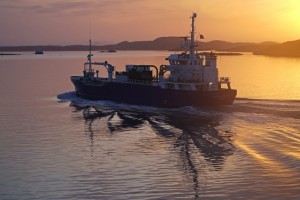 |
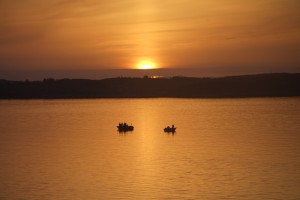 |
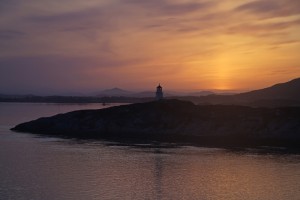 |
In the evening, I was on deck searching for Northern Lights which were visible for about half an hour. They were weak and nothing compared with what I have seen before. Anyway, that’s nature: we have to appreciate whatever comes along.
April 4 Monday: Trondheim
The boat arrived in Trondheim, my destination before 7 am. I got up early, had breakfast and disembarked at 8am. I walked to P Hotel right next to the train station. Trondheim (about 500km from Oslo) founded in 997 AD and formerly known as Nidaros, was the capital of Norway from 1030 to 1217 AD. It is now the administrative centre of Sør-Trøndelag county and the third most populous municipality in Norway with some 185,000 inhabitants. It remains the seat of the Lutheran Diocese of Nidaros and the Nidaros Cathedral, Norway’s national shrine and burial site of Olav the Holy.
This whole region is full of history. The famous Battle of Stiklestad (about 100km from Trondheim) on July 29, 1030, was a turning point in the history of Norway that marked the transition from paganism to Christianity. Olav the Holy lost his life in this battle. Røros, a mountain mining town and one of Europe’s oldest preserved wooden towns with over 100 listed buildings, is now a World Heritage Site.
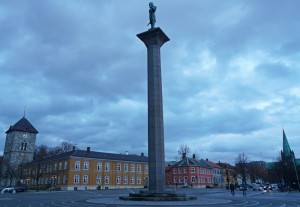 Trondheim has a more relaxed atmosphere and rustic feel. A statue of Olav Tryggvason (founder of Trondheim) mounted on top of an obelisk, is located in the city’s central square. The statue base is also a sun dial. As I could not check in till 3pm, I spent the morning exploring the city on foot. My first stop was Nidarosdomen, the world’s northernmost Gothic cathedral and the biggest medieval church in Scandinavia. Work of the cathedral built over the tomb of St Olav, began in 1070 AD. It was the coronation church during the Middle Ages and after independence between 1814 and 1906. The Pilgrim’s Route to the site of St Olav’s tomb (about 640 km from Oslo) is popular. I paid 90 NOK to enter but was disappointed to find no information on site. One has to buy a booklet (50 NOK) to get basic information. Anyway, I could not visit the Archibishop’s Palace Museum and see the Norwegian Crown Jewels as museums are closed on Monday.
Trondheim has a more relaxed atmosphere and rustic feel. A statue of Olav Tryggvason (founder of Trondheim) mounted on top of an obelisk, is located in the city’s central square. The statue base is also a sun dial. As I could not check in till 3pm, I spent the morning exploring the city on foot. My first stop was Nidarosdomen, the world’s northernmost Gothic cathedral and the biggest medieval church in Scandinavia. Work of the cathedral built over the tomb of St Olav, began in 1070 AD. It was the coronation church during the Middle Ages and after independence between 1814 and 1906. The Pilgrim’s Route to the site of St Olav’s tomb (about 640 km from Oslo) is popular. I paid 90 NOK to enter but was disappointed to find no information on site. One has to buy a booklet (50 NOK) to get basic information. Anyway, I could not visit the Archibishop’s Palace Museum and see the Norwegian Crown Jewels as museums are closed on Monday.
I strolled aimlessly along the old alleys built around Stiftsgården (1774), the royal residence in Trondheim before crossing the Old Town Bridge and the “Portal of Joy” to reach Bakklandet (the old town). This area is lovely with streets lined with old, colourful and picturesque houses. Both sides of the river are planked with colourful storehouses. I walked uphill to visit the Kristiansten Fortress (1681-1684) behind the old town.
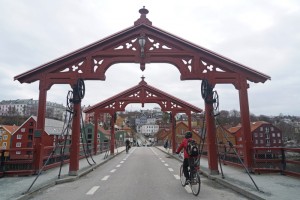 |
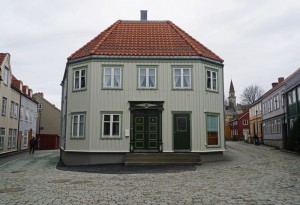 |
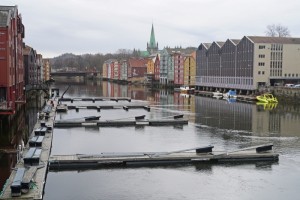 |
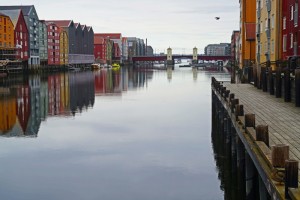 |
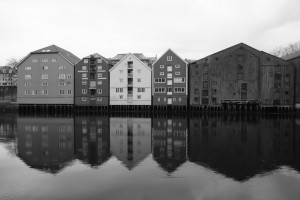 |
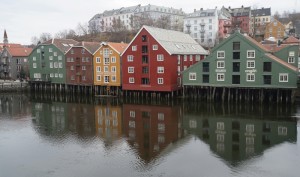 |
Around 2 pm, I returned to the hotel to check in. I was hungry and went across the road to have a daily special (169 NOK) at Trolly, a new restaurant open a month ago. Today’s special served between 3 and 6 pm was duck confit. Trondheim has been described as Norway’s City of Food. The sour dough and duck I had are excellent indeed.
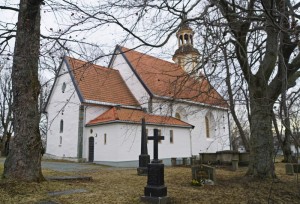 |
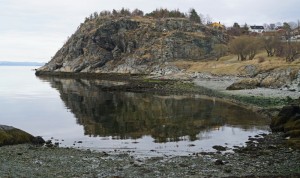 |
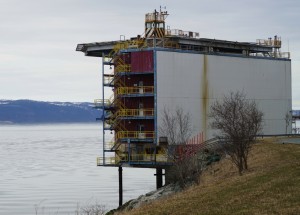 |
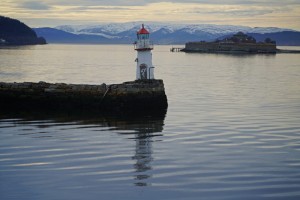 |
The city is well served by public buses but I prefer to walk to better appreciate the place. I walked to Lademoen along the main road and took a walking trail along the coast back to the city. Then I reached Svartla‘mon which has been described as an ‘alternate’ area. The old wooden buildings are covered by painting with a large outdoor wall painting. I saw two artists spraying paint on a fence creating another piece of street art. I wonder whether they are Håkon Bleken and Håkon Gulvåt. I looked for the iconic large wall murals in Lade in vain. Perhaps, I have took the wrong turn somewhere.
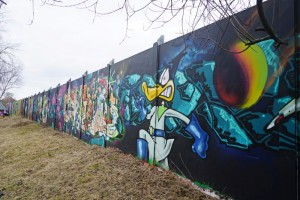 |
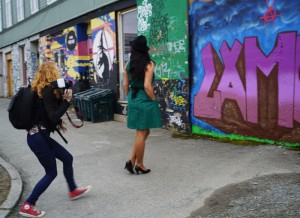 |
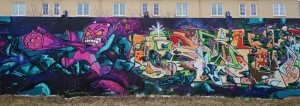 |
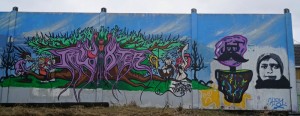 |
April 5 Tuesday: Trondheim
I did not get up till 9:30am. It was miserable and grey. I did not venture out till 11 am and had a dull day till I ran into a young man in a church.
What should I do on a rainy day? I returned to the Cathedral to get a combined ticket in order to visit the Archibishop’s Palace Museum and see the Norwegian Crown Jewels. I only paid 90 NOK as I had already paid 90 NOK the day before. The Palace is the oldest church-owned secular building in Scandinavia and one of the best preserved facilities of its kind in Europe. One can still see a wall from the 13th century at the basement.
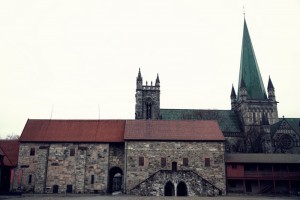 |
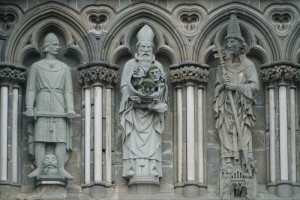 |
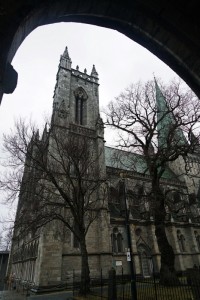 |
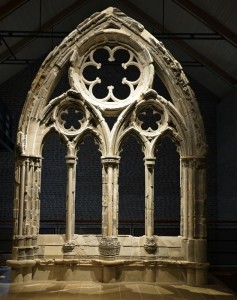 |
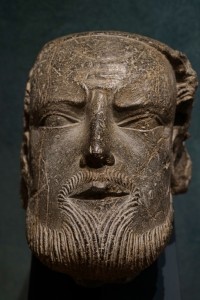 |
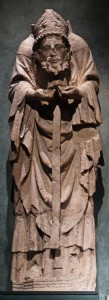 |
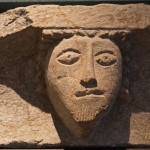 |
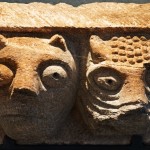 |
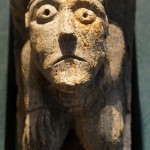 |
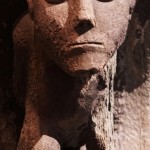 |
I was bored and believed a good meal would do me good. I went to a seafood restaurant by the river which had a 2-course lunch for less than 300 NOK. I got there at 3pm only to find out that it would open at 4pm. I was disappointed and walked along the old alleys which took me to Vår Frue Church (1200) near Stiftsgården. I walked into this charming stone church in Romanesque and Gothic architectural style and was surprised to discover another world. The church was lit-up and lively: a few ladies were knitting while men sitting around another table were playing cards. A group of Middle East looking folks with ladies wearing scarves were having chatting in one corner. Later a young man played the piano. When I tried to buy a cup of coffee, the lady behind the table told me it’s free. A free drink with biscuit and sweet in a warm shelter particularly during the bitterly cold dark winter days is a great service for those who may not be able to afford it.What a wonderful service for the community! I glady gave a donation to the church for my coffee and biscuit.
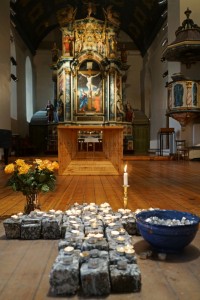 |
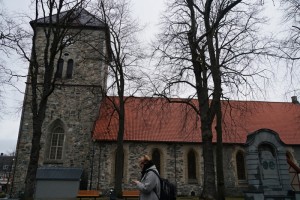 |
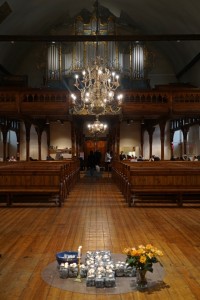 |
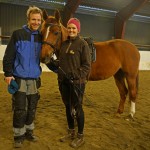 While I was reading an old Economist, a young man asked whether he could sit at my table. His name is Vegard, a carpenter who works with old wood. He often drops by after work for a coffee and to meet friends. I mentioned I dropped the idea to take a tram to Bymarka owing to the poor weather. He said he would drive past that area on his way home and offered me a lift. When we came out of the church, the rain had stopped and the sky was clearing up!
While I was reading an old Economist, a young man asked whether he could sit at my table. His name is Vegard, a carpenter who works with old wood. He often drops by after work for a coffee and to meet friends. I mentioned I dropped the idea to take a tram to Bymarka owing to the poor weather. He said he would drive past that area on his way home and offered me a lift. When we came out of the church, the rain had stopped and the sky was clearing up!
Bymarka is only 15 minutes by car. On our way, he mentioned his wife was now working with her horse in a stable near Bymarka. If I liked, he could take me to meet his wife Maria and her 19-year-old horse Red Garden. It’s a delightful experience to visit a stable where I met Maria who is lovely and beautiful. She was a teenager when she first had her horse 13 years ago! Her love for Red Garden, her dedication and commitment are admirable.
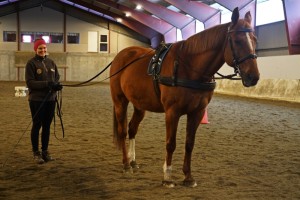 |
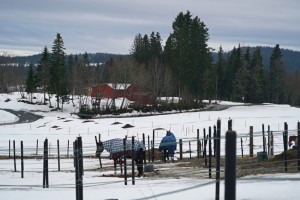 |
Vegard then took me to a viewpoint in Lian for expansive views of the fjoid, Trondheim and the region. I got off at an intersection and spent an hour walking back to the city. Around 6:40pm I saw a long queue outside a chapel near the St. Olavs University Hospital. People told me about a performance by a medical student choir at 7pm. The performance turned out to be amusing and lively. The singers were all male medical students. Though I cannot understand Norwegian, I gathered the plot is related to sex, the fetus and doctor. They looked funny, acting and singing for an hour. The chapel was filled with young students and their parents! I had a wonderful time.
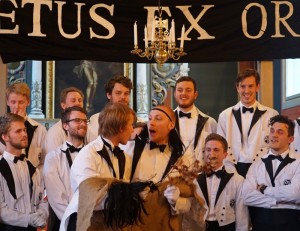 |
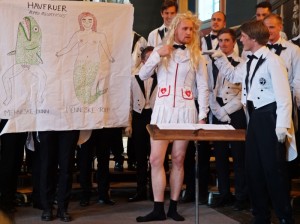 |
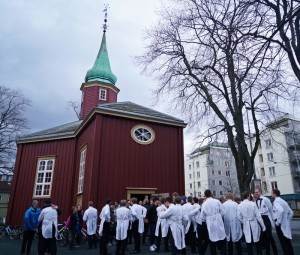 |
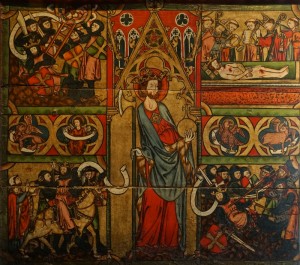 |
It was 8 pm when I came out. After checking out a few restaurants, I decided to return to Trolly for a 3-course dinner with smoked duck, horse fillet and chocolate cake for 398 NOK. What a wonderful day with sweet memories of the Vår Frue Church, Vegard, Maria and her horse and a delicious dinner.
April 6 Wednesday: Trondheim – Oslo
I did not sleep well and got up around 6am. I took a train at 8:23am. It’s a long ride and I did not arrive inn Oslo till 3pm. The scenery especially during the first half of the journey was picturesque with mountains and valleys still covered in snow. Spring has come and snow has almost gone once the train reached low land. I stayed at Citybox Hotel close to the train station. It is a no frill modern hotel open for about three years and my room is indeed like a box.
Oslo founded in 1040 AD is Norway’s capital, most populous city and centre for commerce, banking and shipping. The metropolitan area has an estimated population of 1.7 million. Oslo is a compact modern city well served by public transportation and its cityscape has changed remarkably since my first visit in 2006. The Oslo Opera House part of the urban regeneration scheme has notably transformed the once run-down waterfront area next to the train station.
29 Hours in Oslo
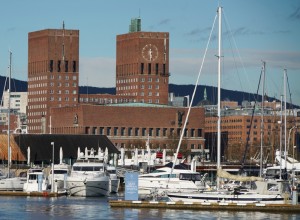 Oslo has a large and varied number of museums, concert halls, theatres and parks. I have been to a few attractions including the Munch Museum, Viking Museum, Vigeland Museum located in Frogner Park and the National Theatre. With less than 30 hours in hand, I decided to focus on two attractions namely the Oslo Opera House and the Fram Museum.
Oslo has a large and varied number of museums, concert halls, theatres and parks. I have been to a few attractions including the Munch Museum, Viking Museum, Vigeland Museum located in Frogner Park and the National Theatre. With less than 30 hours in hand, I decided to focus on two attractions namely the Oslo Opera House and the Fram Museum.
After leaving my luggage in the hotel, I walked to the Opera House, the largest cultural building constructed in Norway since Nidarodomen (the cathedral in Trondheim). Designed by Snøhetta, this modern award-winning building was completed in 2007 with a 1,364-seat auditorium and two performance spaces with seating capacity of 200 and 400. The most striking feature is the roof which angles to ground level, creating a large plaza that visitors can walk up for panoramic views of Oslo. The lobby surrounded by 15m tall windows with minimal framing and special glass allowing maximum views of the water and the interior surfaces covered in oak, looks simple, stylish, warm, bright and welcoming. I have seen the Opera House from the outside and am interested to see a performance. Tonight, a 90-minute play of Scene 2 of ‘Hospitalet’ (meaning hospital) by Jo Strømgren Kompani, was on. I bought a ticket for 300 NOK.
I had three hours before the performance. With a 24-hour ticket for unlimited ride on public transportation (90 NOK), I took a bus to Aker Brygge, a waterfront development with offices, residential flats, restaurants, cafes, bars, a hotel and museum. All of a sudden, torrential rain poured down for almost half an hour. The weather is strange these days: I do not expect to such type of rain in Scandinavia.
I discover a new museum, the Astrup Fearnley Museum of Modern Art has opened since my last visit in 2010. The architecture looks impressive but I have no time for a visit. Instead, I had a lamb shank for dinner before returning to the Opera House.
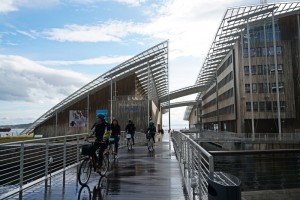 |
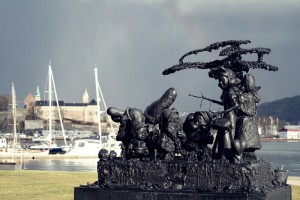 |
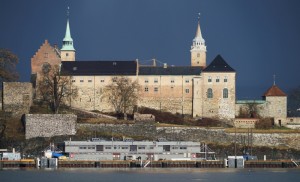 |
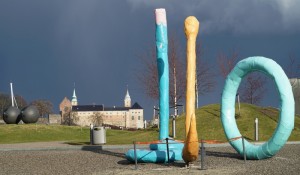 |
It’s still early and I spent half an hour on the roof admiring the clever design which opens up the expansive roof for public enjoyment. The stage setting is simple and three nurses moved in and out for about 90 minutes. As it was in Norwegian without subtitles, I was at a total loss. I can vaguely tell that the isolation has resulted in most absurd and crazy behaviours of the three nurses. The only background noise came from a helicopter a couple of times. It’s an experience though not as enjoyable as I had hoped for.
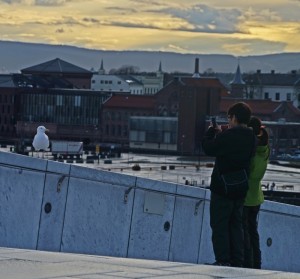 |
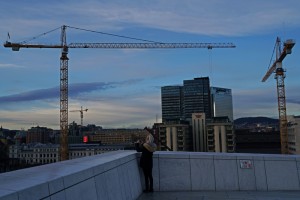 |
April 7 Thursday : Oslo – Helsinki – Hong Kong
Today’s the last day of my trip: I would leave Oslo at 8:30pm with a connecting flight in Helsinki around midnight. I spent four hours in the Fram Museum from 10am to 2pm. It is undoubtedly the best museum on polar exploration I have ever visited.
Located on the peninsula of Bygdøy and inaugurated in May 1936, the museum honours Norwegian polar exploration in general and three great Norwegian polar explorers in particular – Fridtjof Nansen (1861-1930), Otto Sverdrup(1854-1930) and Roald Amundsen (1872-1928).After having been to the North Pole, Greenland and the Antarctica including Peter I Island and Bøuvet, the world’s most remote uninhabited island, I believe it’s time to pay tribute to the great Norwegian explorers by visiting this museum.
Fridtjof Nansen
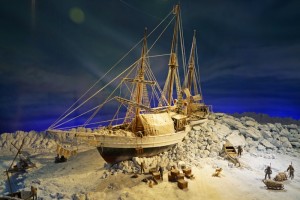 My curiosity in Nansen began during my journey to North Pole in June 2014. He led the first Fram expedition (1893-1896) aiming to reach the geographical Pole by harnessing the natural east-west current of the Arctic Ocean. He had Fram specially designed and made to stand pressure when frozen and drifting in pack ice. But progress was so slow that he decided to leave the boat with Hjalmar Johansen and began their ski journey to the Pole on March 14, 1895 with a team of dogs and sledges. On April 7, they achieved a record farthest north latitude of 86°13.6′N before a retreat over ice to reach Franz Joseph Landin early August. The pair wintered in ‘The Hole‘ at Cape Flora which I have visited. On June 17, 1896, they were rescued by Frederick Jackson, an Englishman. In the meantime, Fram under the leadership of Sverdrup drifted on and finally reaching 85°55′N on November 15, 1895. Nansen reunited with those on Fram in Tromsø on August 21, 1895 and Fram sailed triumphantly into Oslo on September 9, 1896. What an epic journey! Nansen had proved the polar drift theory. I bought without hesitation his book ‘Farthest North‘ (first published in 1897).
My curiosity in Nansen began during my journey to North Pole in June 2014. He led the first Fram expedition (1893-1896) aiming to reach the geographical Pole by harnessing the natural east-west current of the Arctic Ocean. He had Fram specially designed and made to stand pressure when frozen and drifting in pack ice. But progress was so slow that he decided to leave the boat with Hjalmar Johansen and began their ski journey to the Pole on March 14, 1895 with a team of dogs and sledges. On April 7, they achieved a record farthest north latitude of 86°13.6′N before a retreat over ice to reach Franz Joseph Landin early August. The pair wintered in ‘The Hole‘ at Cape Flora which I have visited. On June 17, 1896, they were rescued by Frederick Jackson, an Englishman. In the meantime, Fram under the leadership of Sverdrup drifted on and finally reaching 85°55′N on November 15, 1895. Nansen reunited with those on Fram in Tromsø on August 21, 1895 and Fram sailed triumphantly into Oslo on September 9, 1896. What an epic journey! Nansen had proved the polar drift theory. I bought without hesitation his book ‘Farthest North‘ (first published in 1897).
Last year when I was in Greenland, I also heard many times about his crossing of Greenland’s inland ice in 1888 and his wintering in Nuuk. He was a Renaissance man: he was a sportsman, zoologist, researcher, scientist and statesman, an oceanographer, explorer and humanitarian. He won the Nobel Prize in 1922 for his work as a high commissioner of the League of Nations. What a legendary person with exceptional and most distinguished achievements!
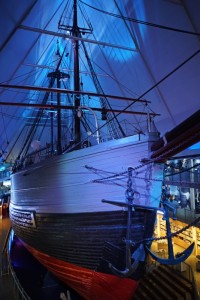 |
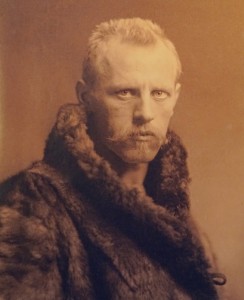 |
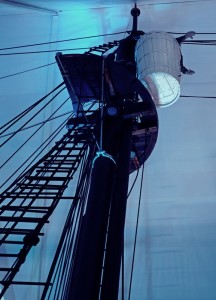 |
Roald Amundsen
I have heard Amundsen’s race to the South Pole many times since my first trip to the Antarctica in 1999. I know he was the first to navigate the Northwest Passage with a crew of six in Gjøa (1903-1906); the first to reach the South Pole on December 14, 1911 beating Robert Scott; a navigator of the Northeast Passage, the first to fly to latitude 88N and the first to fly on Norge across the Arctic Ocean with Ellsworth and Nobile in 1926.
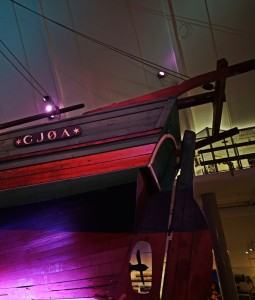 |
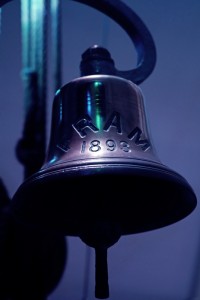 |
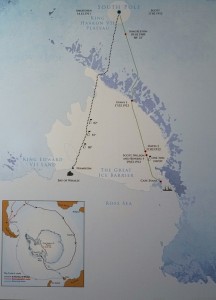 |
After attending lectures on previous expeditions, I had the impression that he was aloof, ambitious and schematic. He could be unscrupulous as shown during his quest for South Pole: he switched from a northbound polar expedition on Fram to a southbound one (1910-1914) in order to be the first to reach the Pole. He succeeded and planted a Norwegian flag at the Pole on December 14, 1911. But I have a fuller picture of Amundsen after this visit. He was a loner and I admire and respect him for his resolution to be a polar explorer at the age of 15 and his quest for knowledge and skills to reach his goals. In order to make himself familiar with magnetic measurements, he went to Hamburg and spent several months with Dr G von Neumayer, the foremost expert in the field of terrestrial magnetism in order to learn all the details of precise observations. His success as the greatest polar explorer was a result of his Viking DNA, pragmatism, clear goals, grounded knowledge and careful preparation.
Two Polar Vessels on Display
It’s a wonderful experience to get on board the three-masted schooner Fram which had taken Nansen on his polar drift (1893-1896), Sverdrup to northwest Greenland and the islands north of the Canadian mainland for scientific investigation (1898-1902) and Amundsen on his quest for South Pole (1910-1914). The boat was sturdy, compact and not big at all. It has been well-preserved and each cabin has the name of the great explorer who had stayed there. I can feel their forever presence, zeal, spirit as well as obsession while walking through the boat.
Gjøa which had been purchased by Amundsen for exploring the Northwest Passage is smaller. Visitors cannot get on the boat.
I watched twofilms; one on Norwegian exploration and one on Ernest Shackleton (1874-1922), the British explorer who became a hero for his courage to turn back when he was only180km from the South Pole during his 1907-1909 expedition and his epic journey on Endurance (1914-1917). I am surprised to find half a floor exhibition space is devoted to Shackleton’s life and exploration of the Antarctica. I suppose this reflects the Norwegian explorers’ respect and liking for an explorer of their league.
Finally, the Norwegians do a good job creating fairly real Northern Lights shining brightly and mysteriously above Fram in the main exhibition hall.
I took a NSB train to the airport. With my 24-hour ticket, I only need to pay 60 NOK (instead of 90 NOK). My plane took off on schedule and I arrived in Helsinki at 10:30pm. I embraced Venus who had finished her tour in Sweden after leaving me on March 27 in Lofoten. We talked enthusiastically about our experience while waiting. We had a midnight flight and landed in Hong Kong around 2:30pm on April 8.
Remarks
I had a great time spending four nights at sea from Kirkenes to Trondheim, ten nights in Lofoten and three nights below the Arctic Circle in Trodheim and Oslo. I was with Ellen, Kylie and Venus for the first six days and by myself for the remaining 11 days. Travelling with nice companions is enjoyable. The landscape in Northern Norway is dramatic and striking. The weather can change fast: we had everything: heavy snow, sleet, rain, sunshine and blue sky. We had a wonderful four days together in Lofoten with an excellent and most cautious driver. Without Venus, we would not have been able to move around especially during the Easter holiday.
I had a different and unforgetable time after my friends left me at Borvåg. First, the World Cod Fishing Championships is a great Nordic experience. The organisation and logistics are perfect. The weather was generally good. The forecast for Northern Lights during that period was excellent (though I saw nothing). Everyone had a good time!
Second, I stayed in two wonderful houses booked through Airbnb. Borvåg by the sea is so remote that there was hardly a soul around. Geir my host is a nice guy. The B&B run by Ben and Neil at Osan is awesome and everything is perfect! They are generous and cheerful making their house so warm and welcoming. I was touched by their hospitality and helpfulness.
Third, I saw Northern Lights on seven nights. The ones on March 27 and 28 at Borvåg were the best in terms of vibrancy, colours and patterns. The mountains on both sides and the sea in front of the house provide a great setting for photos. I wish I had better photography techniques so that I could do justice to what I have seen. On April 1 and 2, the kp level was high at G1 storm level. But I did not see much at all. What a pity!
Fourth, I finally had a chance to hike in Lofoten thanks to my young French friends Claire and Robin. Norway is mountainous and a paradise for hikers and mountaineers.
Fifth, I enjoy meeting locals. My stay in Trondheim would be dull had I not met Vegard in the church. He is soft-spoken and gentle and his wife Maria is so sweet. Their family photo with her horse Red Garden is a nice souvenir for me.
Finally, I pay tribute to the Norwegian polar explorers by visiting the Fram Museum. The stories of Nansen, Amundsen and other explorers are fascinating. It is one of the best museums in recent years owing to my interest. I hope to follow Nansen’s step to East Greenland soon and take the Northwest Passage in coming years.


